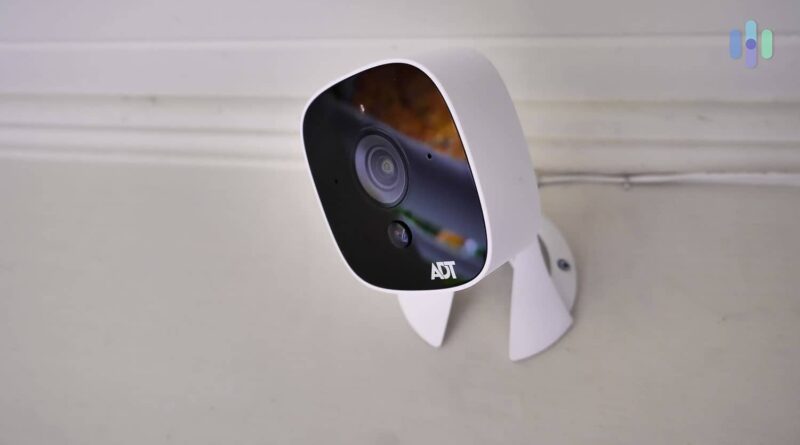5 Tips to Follow When Installing a Home Security Camera System
Security camera systems have become extremely popular over the last few years, and for good reason. If you’ve ever had the unfortunate experience of being robbed, you’ll know what a blessing it can be to have cameras protecting your home or business from burglary. However, installing your own security camera system isn’t as easy as simply plugging in a few cameras and getting started. Here are five tips you should follow when installing a home security camera system so you can get the best results possible out of your new equipment.
(01) Determine Your Needs
Before installing a home security camera system, it is important to consider what your needs are and the size of the space you are looking to cover. By identifying your security requirements, you can determine which features and types of cameras will work best for you. Some of the most common needs for home security cameras include monitoring access points, capturing footage for evidence, deterring theft and vandalism, and observing people or animals.
Once you have identified these needs, you can begin to plan out which areas need to be covered, how many cameras you will need, and the type of coverage you will need from each camera. Additionally, consider if you would like the cameras to be visible or hidden, as this can influence their placement. With these considerations in mind, you can start to identify which features and camera types best fit your needs.
(02) Do Your Research
When installing a home security camera system, it’s important to do your research. Knowing the type of system that best suits your needs and budget is the first step in ensuring you get the most out of your purchase. There are many different types of security camera systems on the market today, from traditional wired systems to wireless ones. Additionally, there are various features available, such as motion sensors, infrared cameras, and remote viewing. Doing your research and understanding the features available to you will help you make an informed decision when purchasing a security camera system.
Once you have done your research and narrowed down your choices, it is important to consider the placement of the cameras. Make sure that you place the cameras in the right spots to provide adequate coverage. This could be areas where intruders can hide, points of entry and exit, and other areas that may be difficult to monitor without a camera. Doing this ahead of time will help ensure that you don’t miss any potential blind spots.
Finally, be sure to research and familiarize yourself with the installation process. There are a number of online resources that can help you understand the steps involved in installing a security camera system. Additionally, you may want to consider hiring a professional to install the system for you. This can save you time and money in the long run, and provide peace of mind that the job was done correctly.
By doing your research and familiarizing yourself with the installation process, you can ensure that your home security camera system is properly installed and will provide you with the protection you need.
(03) Consider The Placement
When it comes to installing a home security camera system, placement is key. Placing the cameras in the right spots can make all the difference in capturing important footage. Here are some tips to help you determine where to place your home security cameras:
1. Identify Important Areas – Before you install any security cameras, it’s important to identify which areas of your home need to be monitored most closely. Determine if there are any points of entry such as windows or doors that require additional surveillance.
2. Use Windows & Doors Strategically – Windows and doors can be great spots for cameras, as they give you a clear view of any potential intruders. Place cameras near windows and doors to help you detect any suspicious activity.
3. Place Cameras High – When possible, it’s best to place your cameras at a higher elevation. This will provide you with a wider angle of view, which can give you better coverage. Consider mounting cameras on the walls or ceilings of your home for maximum coverage.
4. Monitor Dark Areas – Make sure to pay attention to any dark areas of your home, such as basements or garages. These areas may not be as visible, so adding a few extra cameras can ensure that these areas are properly monitored.
5. Utilize Existing Light Sources – Utilizing existing light sources can help you identify any potential threats at night. Consider placing security cameras near windows or other light sources to ensure that your camera can capture any activity during the night.
By following these tips, you’ll be able to effectively place your home security cameras in order to maximize coverage and protection. With the right placement, your home security system can be an effective deterrent against intruders.
(04) Installation
Installing a home security camera system can be a daunting task, but there are a few tips to make the process simpler. Before getting started, you’ll need to research your specific camera model and make sure you have the right hardware and software components. Here are five tips to follow when installing a home security camera system.
(05) Home Security Camera Installation
The security of your home should be an important priority to you. Your home is where you sleep and prepare meals, it’s where you keep your valuables and it’s where you entertain guests. What could be worse than someone breaking into your house and stealing from you? Unfortunately, this does happen quite frequently and the police cannot always catch the bad guy. For an added layer of protection, home security cameras can provide video evidence of criminal activity on your property, whether it’s theft or vandalism. Learn about the benefits of installing a home security camera in your home today!

